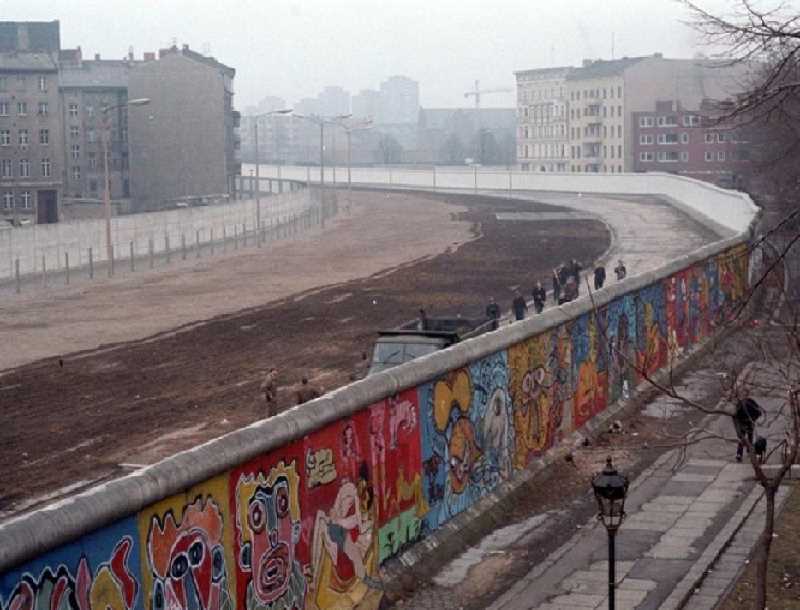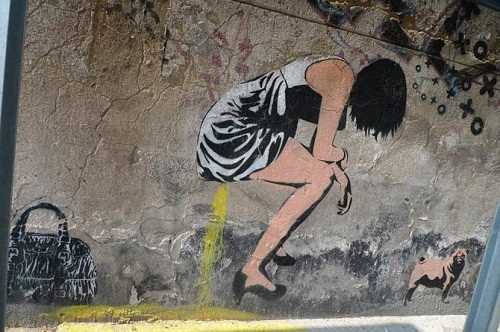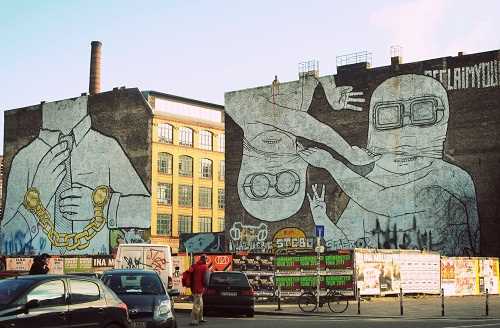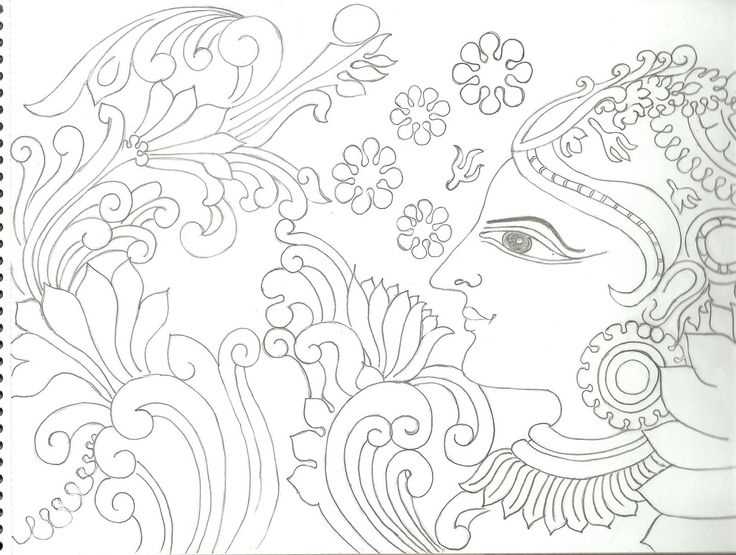
Berlin has emerged as one of the world’s street art capitals, a vibrant and diverse city where urban creativity flourishes. But how did this cultural phenomenon come to be?
In the early 1980s, Berlin was a divided city caught between the forces of East and West. The Berlin Wall, which stood as a physical and ideological barrier, created a unique atmosphere of resistance and rebellion. This environment provided a fertile ground for artistic expression, leading to the birth of the city’s street art scene.
With the fall of the Wall in 1989, Berlin underwent a rapid transformation. The abandoned buildings and empty spaces became canvases for artists to reclaim the city and challenge the status quo. Graffiti, stencils, and wheat-pasted posters began to appear on the walls, spreading messages of protest, social commentary, and artistic experimentation.
As the movement grew, so did the recognition of Berlin as a haven for street art. International artists flocked to the city, inspired by its vibrant energy and accepting culture. Today, Berlin streets are adorned with vibrant murals, thought-provoking installations, and hidden gems awaiting discovery.
Berlin street art has become a symbol of the city’s resilience, creativity, and cultural heritage. It serves as a testament to the power of art to transcend boundaries and bring people together. Whether you’re exploring the famous graffiti-covered East Side Gallery or stumbling upon a hidden masterpiece in a back alley, Berlin’s street art scene is sure to captivate and inspire.
The Influence of Berlin’s Urban Culture on Street Art
Berlin’s urban culture has had a profound influence on the development and evolution of street art in the city. The unique history and vibrant atmosphere of Berlin have provided a fertile ground for the expression of artistic ideas and a platform for artists to convey their messages.
One of the major factors that has contributed to the rise of street art in Berlin is the city’s rich history of political and social activism. Over the years, Berlin has been at the center of many significant political movements, and the cityscape itself bears the scars of its turbulent past. This sense of historical significance has inspired many street artists to use their work as a means of questioning and challenging societal norms and power structures.
The alternative and countercultural scenes that thrive in Berlin have also played a significant role in shaping the city’s street art. The city has long been a haven for artists, musicians, and activists seeking a space to express themselves freely. This sense of freedom and creativity has permeated the streets of Berlin, resulting in a flourishing street art scene that is known for its experimental and boundary-pushing nature.
Furthermore, Berlin’s status as a global hub for contemporary art and culture has attracted artists from all over the world. This diversity of artistic perspectives and styles has contributed to the eclectic and dynamic nature of Berlin’s street art. International artists bring with them their unique influences, techniques, and cultural backgrounds, adding depth and variety to the city’s already vibrant street art scene.
Berlin’s urban culture, with its history, activism, alternative scenes, and international influences, has created a fertile environment for street art to thrive. The streets of Berlin have become an ever-evolving canvas for artists to express themselves, reflect the city’s spirit, and engage with its residents and visitors.
Graffiti as a Form of Street Art in Berlin

In Berlin, graffiti is not seen as vandalism, but rather as a powerful form of artistic expression. The city’s street art scene is one of the most vibrant and iconic in the world, and graffiti plays a significant role in shaping its cultural landscape.
Graffiti in Berlin emerged as a form of protest and self-expression during the city’s tumultuous history. Following the fall of the Berlin Wall in 1989, artists took to the streets to create murals and graffiti that reflected their desire for social and political change. Today, these pieces serve as a visual reminder of the city’s divided past and the resilience of its people.
What sets graffiti in Berlin apart is its diversity. From large-scale murals that cover the sides of buildings to small stenciled images and elaborate tags, there is a wide range of styles and techniques on display. Artists use a variety of tools and materials, including spray paint, markers, and stencils, to create their works.
While graffiti in Berlin is often associated with rebelliousness and non-conformity, it has also found a place within the mainstream art world. Many street artists in the city have gained international recognition, with their works being exhibited in galleries and museums around the world.
Importantly, graffiti in Berlin is not limited to established artists. The city has a thriving community of up-and-coming street artists who use graffiti as a means of self-expression and creativity. It is not uncommon to stumble upon a hidden alleyway or abandoned building covered in vibrant and thought-provoking graffiti.
Graffiti has become an integral part of Berlin’s identity, with the city actively supporting and promoting street art. The district of Kreuzberg, for example, is known for its vibrant street art scene and has dedicated spaces where artists can legally create and display their works.
Renowned Street Artists in Berlin

Berlin is known for its vibrant street art scene, which is home to some of the most talented artists in the world. From colorful murals to thought-provoking stencils, these artists have left their mark on the city’s walls. Here are a few renowned street artists in Berlin:
1. Banksy
Banksy, an anonymous street artist from the UK, has made a significant impact in Berlin with his stencil-based artwork. His works often convey political and social messages, challenging the status quo. While his identity remains unknown, Banksy’s art can be found in various locations across Berlin.
2. Os Gemeos
3. ROA

ROA, a Belgian street artist, is known for his large-scale black and white animal murals. His hyper-realistic depictions of creatures can be found on buildings and walls throughout Berlin. ROA’s art not only showcases his talent but also raises awareness about the importance of wildlife conservation.
4. Blu
Blu, an Italian artist, has left his mark on Berlin with his impressive large-scale murals. His works often feature surreal and dreamlike imagery, provoking thought and sparking conversations. Blu’s art can be seen in various neighborhoods across the city.
These are just a few examples of the renowned street artists in Berlin. Their art has transformed the city’s landscape, injecting color, creativity, and social commentary into the streets. Berlin continues to be a hub for street art, attracting both established artists and up-and-coming talents from around the world.
Street Art Festivals and Events in the City
Berlin is a city known for its vibrant street art scene, and throughout the year, various festivals and events take place to celebrate and showcase this unique form of artistic expression.
1. Berlin Mural Fest

One of the most anticipated events in the Berlin street art calendar is the Berlin Mural Fest. This festival brings together local and international street artists to transform the city’s walls into stunning works of art. Visitors can explore the different neighborhoods and witness the artists in action, as they spray-paint, stencils, and wheat-paste their way through the urban landscape.
2. Urban Spree Festival
The Urban Spree Festival is another must-see event for street art enthusiasts. Held at the Urban Spree cultural center, this festival encompasses a wide range of urban art forms, including graffiti, murals, and installations. The festival hosts live painting sessions, workshops, and exhibitions, providing a platform for both established and emerging artists to showcase their talent.
These festivals not only showcase the incredible talent of street artists but also help to promote and preserve the city’s unique artistic culture. They attract both locals and tourists, creating a sense of community and appreciation for street art in Berlin.
The Role of Street Art in the Expression of Berlin’s Identity

Street art plays a vital role in the expression of Berlin’s identity, serving as a visual representation of the city’s vibrant, diverse, and rebellious spirit. Throughout history, street art has evolved from an act of rebellion to a powerful tool for self-expression and identity formation.
Berlin, known for its rich history and cultural heritage, has become a hub for street art, attracting artists from around the world. The city’s abandoned buildings, walls, and alleys have become the canvas for these artists, allowing them to convey their messages and ideas freely. Street art has transformed Berlin’s urban landscape, injecting life and creativity into once dull and neglected spaces.
One of the key roles of street art in Berlin is its ability to reflect the city’s political and social issues. The politically charged nature of the city is evident in the street art that covers its walls. Artists use bold and provocative imagery to address topics such as gentrification, inequality, and the city’s turbulent past. This form of art serves as a visual commentary and catalyst for conversations around these issues, creating a sense of social awareness and activism.
Street art also serves as a means for the local community to reclaim their spaces and assert their identity. Berlin’s street art scene is often community-driven, with locals actively participating in the creation and appreciation of this art form. This involvement fosters a sense of belonging and ownership, allowing residents to shape the narrative and representation of their neighborhood.
Furthermore, street art has become a major attraction for locals and tourists alike, contributing to Berlin’s cultural tourism. The city’s reputation as a street art capital has drawn travelers from all over the world, seeking to explore and experience its vibrant urban art scene. This influx of visitors not only supports the local economy but also exposes them to the diverse and unique cultural identity of Berlin.
| Overall, street art in Berlin plays a crucial role in the expression of the city’s identity. It serves as a visual language that communicates the city’s history, political climate, and cultural richness. Street art not only beautifies the urban landscape but also sparks conversations, fosters community engagement, and attracts visitors from far and wide. Berlin’s street art scene continues to evolve, reflecting the ever-changing identity and spirit of the city. |
Challenges and Controversies Surrounding Street Art in Berlin

Street art has become a prominent form of artistic expression in Berlin, but it is not without its challenges and controversies. While many residents and tourists appreciate the vibrant and creative murals that adorn the city’s streets, others view street art as vandalism and graffiti that defaces public property.
Legal Challenges
One of the main challenges facing street artists in Berlin is the legal aspect of their work. While some murals are commissioned and legally painted, many street artists operate in a legal gray area, as painting on public and private property without permission is generally considered illegal.
In recent years, the city of Berlin has attempted to address these legal challenges by implementing initiatives such as legal graffiti walls and designated areas where street art is allowed. These initiatives aim to provide a space for street artists to express themselves without facing legal consequences.
Gentrification and Commercialization
Another controversy surrounding street art in Berlin is the impact of gentrification and commercialization. As Berlin’s popularity as an artistic hub grows, street art has become an attraction for tourists and a tool for real estate developers to market properties.
Some argue that street art has lost its authenticity and rebel spirit, and has been co-opted by the mainstream art world and the market. Artists who were once seen as rebels and outsiders now find themselves in high demand, and their work has become a commodity that can be bought and sold.
| Challenges | Controversies |
|---|---|
| Legal issues | Gentrification and commercialization |
| Lack of recognition | Censorship and removal |
| Conservatism | Perception as vandalism |
Lack of Recognition
Despite its popularity, street art still struggles to gain recognition within the traditional art world. Many art institutions and galleries have been slow to recognize street art as a legitimate art form, which has led to a lack of opportunities for street artists to showcase their work in mainstream venues.
However, there are efforts being made to bridge this gap. Street art festivals and exhibitions have emerged in Berlin, providing platforms for street artists to showcase their talents and gain recognition from a wider audience.
Censorship and Removal

Street art is often subject to censorship and removal in Berlin. Some argue that this is necessary to maintain the cleanliness and orderliness of the city, while others see it as a violation of artistic freedom.
While some murals are protected and preserved, others are painted over or removed without the artist’s consent. This has sparked debates about the ephemeral nature of street art and the rights of artists to have their work respected and preserved.
Preserving and Documenting Berlin’s Street Art
Preserving and documenting Berlin’s vibrant street art scene is crucial in ensuring the longevity and cultural significance of these urban artworks. As street art is ephemeral in nature, subject to removal or deterioration, it is important to take steps to preserve and document these pieces for future generations.
One way to preserve street art is through the use of protective coatings such as anti-graffiti sprays or laminate films. These coatings help to protect the artwork from vandalism, weather exposure, and general wear and tear. However, it is important to find a balance between preserving the art and allowing it to evolve and change over time, as this is a fundamental aspect of the street art culture.
In addition to physical preservation, documenting street art is essential for its long-term conservation. Photographs and videos can capture the essence of an artwork, providing a visual record of its existence. Online platforms, such as street art databases and social media, play a crucial role in documenting and sharing these artworks with a global audience.
Moreover, documenting the stories and context behind each piece is equally important. Artists’ biographies, interviews, and explanations of their artistic process contribute to a deeper understanding and appreciation of the art form. This contextual information can be shared through written articles, audio recordings, or video documentaries.
Local initiatives, galleries, and street art festivals also play a vital role in preserving and promoting Berlin’s street art. These platforms provide artists with opportunities to create legal and sanctioned artworks, which are less likely to be removed or painted over. They also foster a sense of community and support among street artists and enthusiasts.
- Street art preservation techniques:
- Protective coatings such as anti-graffiti sprays or laminate films
- Balancing preservation with allowing the art to evolve and change over time
- Documenting street art:
- Photographs and videos to capture the essence of the art
- Online platforms for sharing and global visibility
- Contextual information through artists’ biographies and explanations
- Local initiatives, galleries, and festivals for legal and sanctioned art

I am a mural enthusiast and a fervent admirer of street art. Rather than creating murals myself, I am passionate about collecting them. My love for street art knows no bounds. I am dedicated to curating and cherishing these artworks that grace the streets. My collection stands as a testament to my profound appreciation for this form of artistic expression.
read about me



